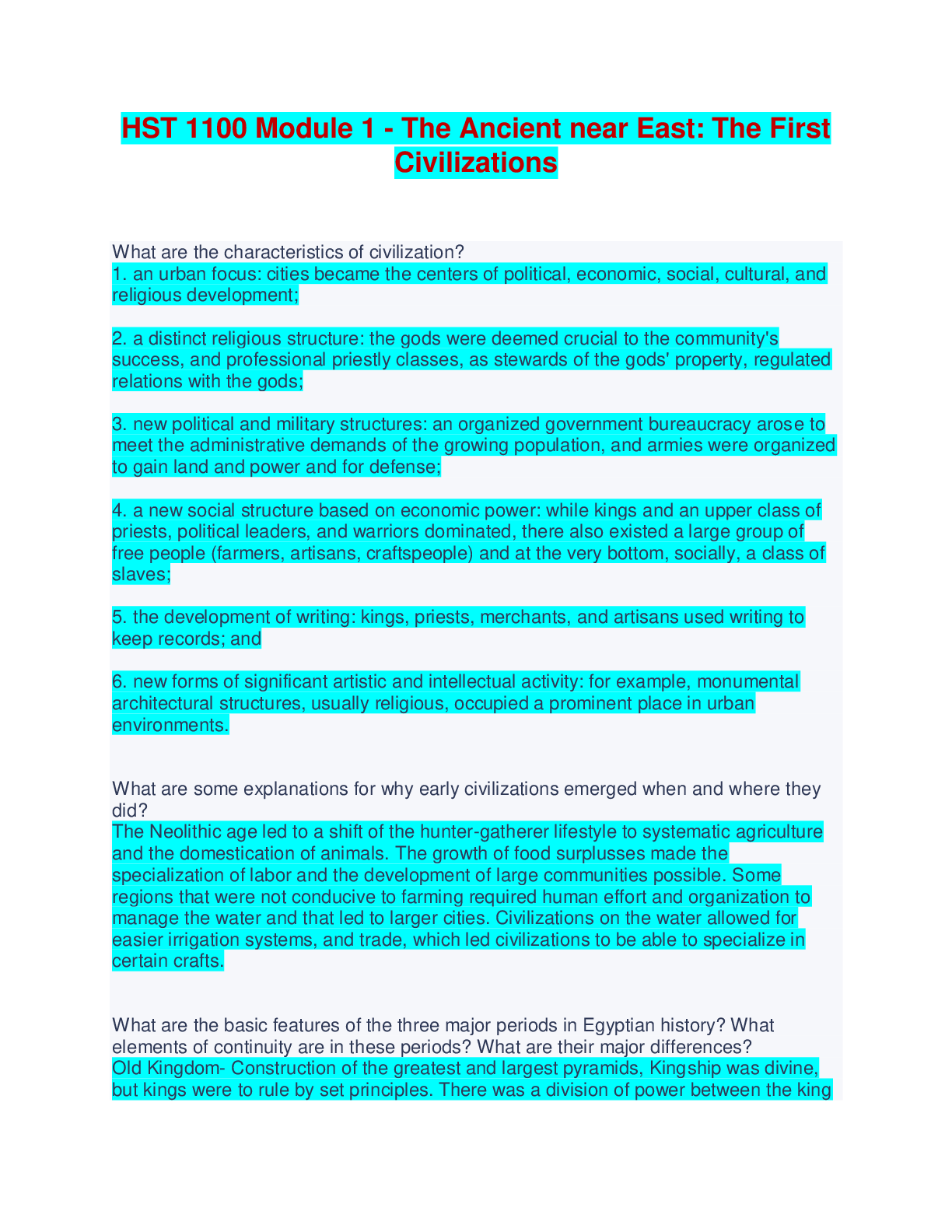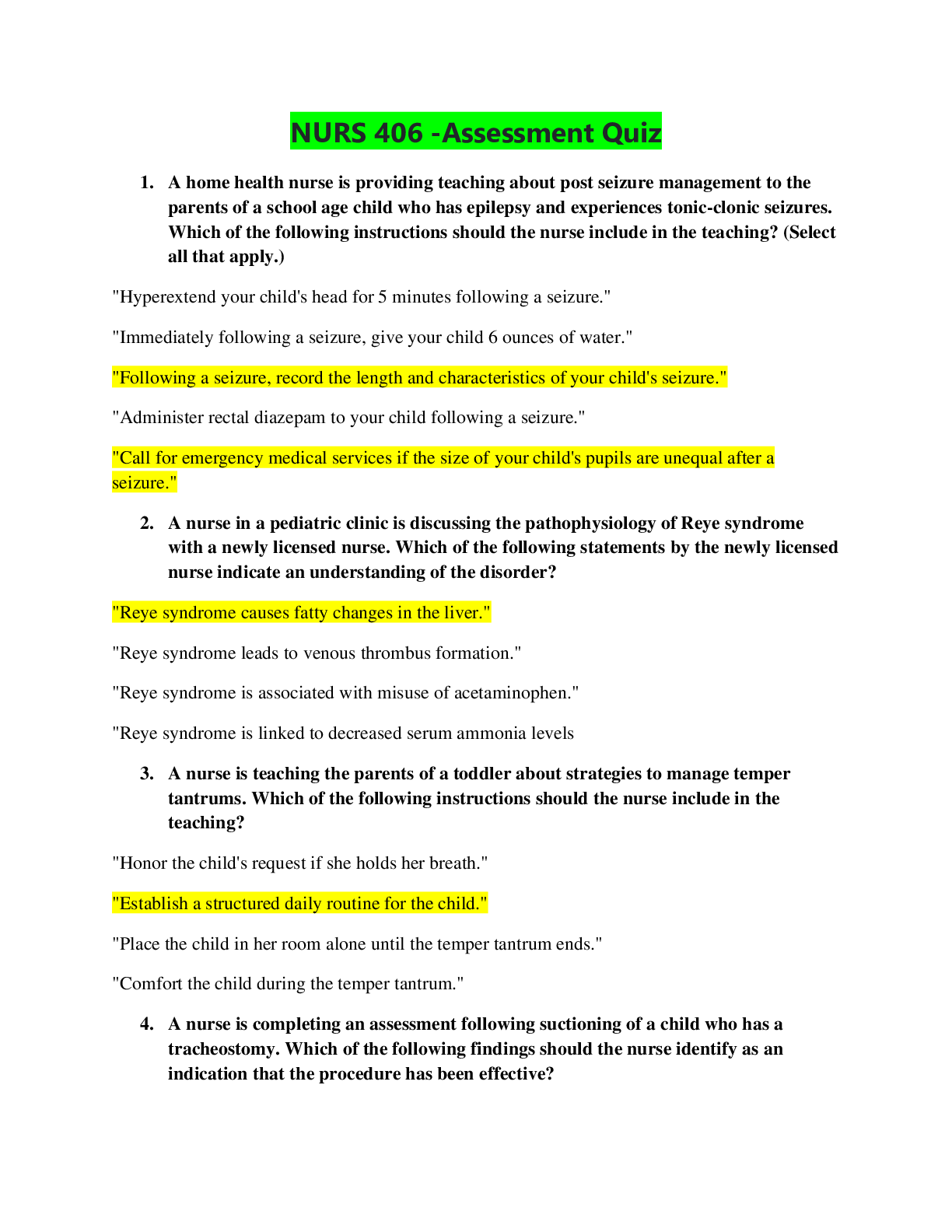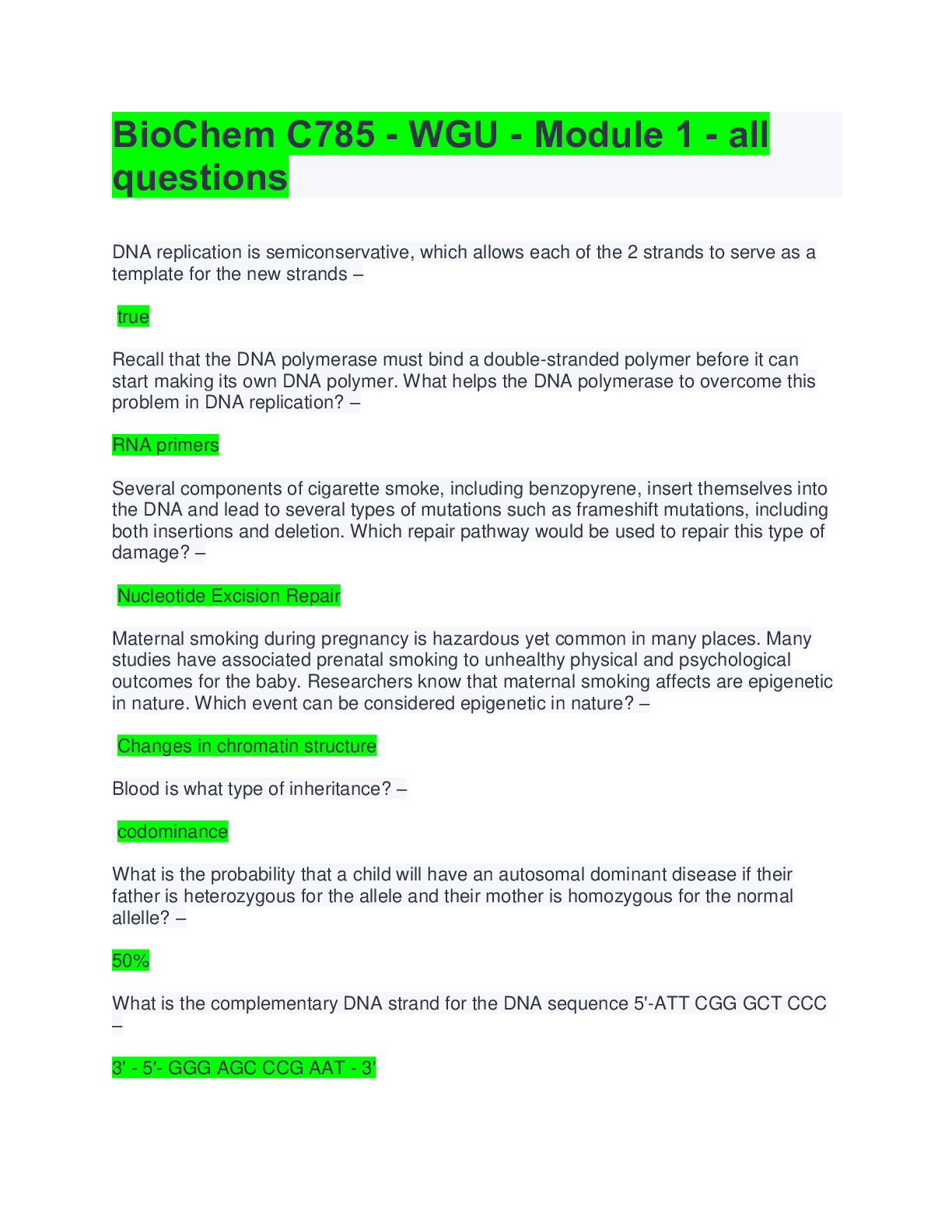HST 1100 Module 1 - The Ancient near East: The First Civilizations
Document Content and Description Below
HST 1100 Module 1 - The Ancient near East: The First Civilizations What are the characteristics of civilization? 1. an urban focus: cities became the centers of political, economic, social, cultural,... and religious development; 2. a distinct religious structure: the gods were deemed crucial to the community's success, and professional priestly classes, as stewards of the gods' property, regulated relations with the gods; 3. new political and military structures: an organized government bureaucracy arose to meet the administrative demands of the growing population, and armies were organized to gain land and power and for defense; 4. a new social structure based on economic power: while kings and an upper class of priests, political leaders, and warriors dominated, there also existed a large group of free people (farmers, artisans, craftspeople) and at the very bottom, socially, a class of slaves; 5. the development of writing: kings, priests, merchants, and artisans used writing to keep records; and 6. new forms of significant artistic and intellectual activity: for example, monumental architectural structures, usually religious, occupied a prominent place in urban environments. What are some explanations for why early civilizations emerged when and where they did? The Neolithic age led to a shift of the hunter-gatherer lifestyle to systematic agriculture and the domestication of animals. The growth of food surplusses made the specialization of labor and the development of large communities possible. Some regions that were not conducive to farming required human effort and organization to manage the water and that led to larger cities. Civilizations on the water allowed for easier irrigation systems, and trade, which led civilizations to be able to specialize in certain crafts. What are the basic features of the three major periods in Egyptian history? What elements of continuity are in these periods? What are their major differences? Old Kingdom- Construction of the greatest and largest pyramids, Kingship was divine, but kings were to rule by set principles. There was a division of power between the king [Show More]
Last updated: 8 months ago
Preview 1 out of 5 pages
Instant download

Buy this document to get the full access instantly
Instant Download Access after purchase
Add to cartInstant download
Also available in bundle (1)

HST 1100 MODULE 1 - 12 EXAMS BUNDLE
HST 1100 MODULE 1 - 12 EXAMS BUNDLE
By Ajay25 8 months ago
$45
12
Reviews( 0 )
Document information
Connected school, study & course
About the document
Uploaded On
Oct 24, 2023
Number of pages
5
Written in
Additional information
This document has been written for:
Uploaded
Oct 24, 2023
Downloads
0
Views
34













 (1).png)








